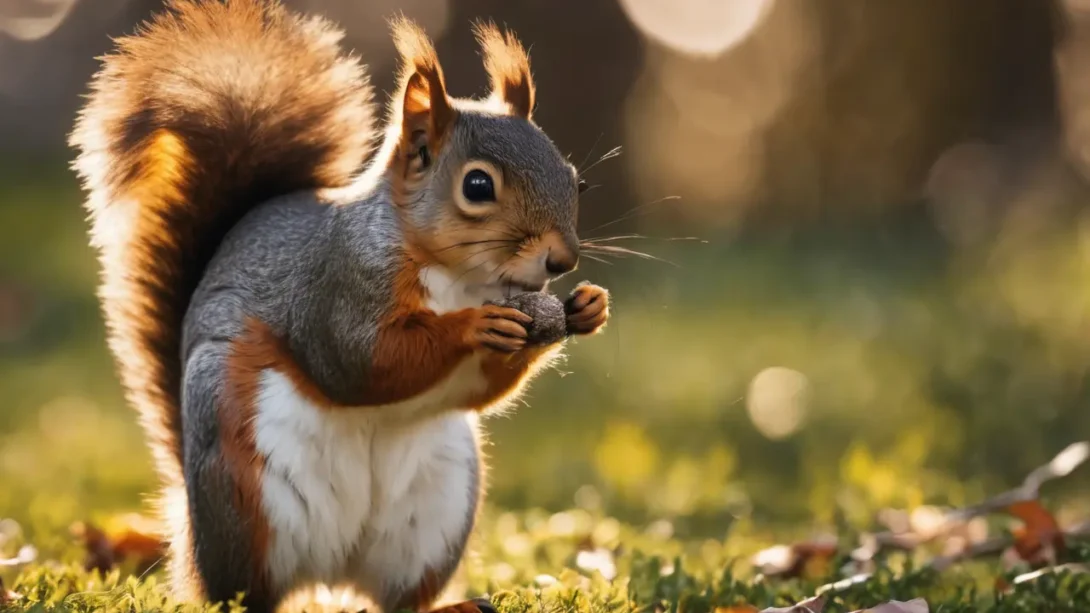Attracting squirrels to your garden can transform your outdoor space into a lively and entertaining natural habitat. These agile and curious creatures bring energy and charm, making them a delightful sight for nature lovers, photographers, and families alike. Understanding the behaviors, preferences, and needs of squirrels is the first step in creating an environment that welcomes them. This guide will explore the foundational aspects of attracting squirrels to your garden, from identifying suitable food sources to providing safe and appealing shelters.
Squirrels
Squirrels are among the most common wildlife found in suburban and rural areas, known for their bushy tails and acrobatic abilities. The most frequently encountered species in gardens are the gray squirrel, red squirrel, and in some regions, the fox squirrel. Each species has its unique dietary habits and habitat preferences, which are crucial to consider when attempting to attract them to your garden.
- Dietary Habits: Squirrels are primarily herbivorous, enjoying a diet that includes nuts, seeds, fruits, and sometimes even small insects. Their preferences can vary by species and season, influencing the type of food you should offer to attract them.
- Behavior: Squirrels are active during the day, with peak activity times in the early morning and late afternoon. They are known for their curious nature, which can be both a challenge and an advantage in attracting them.
- Habitat Preferences: While squirrels adapt well to various environments, they prefer areas that offer ample tree cover, nesting sites, and food sources. Understanding these preferences is key to making your garden more inviting.
Creating a Squirrel-Friendly Habitat
Food Sources
One of the most effective ways to attract squirrels is by providing a consistent and varied food supply. Here’s how you can create an appealing menu for your furry visitors:
- Nuts and Seeds: Offer unsalted nuts like walnuts, almonds, and pecans, either in the shell or cracked. Birdseed mixes or sunflower seeds are also popular among squirrels.
- Fruits and Vegetables: Squirrels enjoy a variety of fruits and vegetables. Apples, oranges, and carrots can be a treat for them.
- Feeders: Using squirrel-specific feeders can help keep squirrels away from bird feeders and concentrate their activity in desired areas. Ensure feeders are sturdy and placed away from easy access to predators.
Water Sources
Just like any other wildlife, squirrels need access to fresh water. Incorporating water features in your garden can significantly enhance its attractiveness to squirrels:
- Birdbaths or Shallow Dishes: Provide shallow water sources that are easy for squirrels to access. Ensure they are cleaned and refilled regularly to maintain hygiene.
- Placement: Position water sources near sheltered areas to offer protection while squirrels drink.
Shelter and Nesting Sites
Beyond the basics of food and water, offering appropriate shelter and nesting sites is critical for attracting and retaining squirrels in your garden. Squirrels seek out areas that provide safety from predators and elements, as well as suitable locations for raising their young.
Natural Shelters
- Tree Cavities and Dense Foliage: Squirrels naturally gravitate towards tree cavities for nesting and protection. If your garden has mature trees, especially those with natural cavities, you’re already a step ahead. Dense foliage and thick shrubbery can also offer necessary cover for squirrels to feel safe.
- Planting Squirrel-Friendly Trees and Shrubs: Enhance your garden’s appeal by planting additional trees and shrubs. Oak, hickory, and pine trees not only provide shelter but also a natural food source with their acorns, nuts, and cones. Dense bushes and evergreens offer excellent cover year-round.
Artificial Shelters
For gardens lacking in natural tree cover, or to supplement existing vegetation, consider installing artificial shelters:
- Nesting Boxes: Installing squirrel nesting boxes in your garden can provide a safe haven for squirrels. Place them high up in trees or on secure posts to protect squirrels from ground predators.
- Design and Placement Tips: Ensure the design of the nesting boxes mimics natural cavities, with appropriate entry hole sizes to deter larger, unwanted wildlife. Placement should offer easy access for squirrels but be challenging for predators.
Safety Measures
Attracting squirrels means ensuring their safety from common urban and suburban threats, including predators and human-made hazards.
Predator Deterrence
- Secure Fencing: While completely predator-proofing a garden is challenging, secure fencing can deter some ground predators. Consider adding a smooth, tall barrier that is difficult for cats or dogs to climb.
- Strategic Feeder and Shelter Placement: Position feeders and shelters away from areas where predators can easily ambush squirrels. Utilizing tree branches or installing poles with predator guards can help.
Chemical-Free Environment
- Avoid Pesticides and Rodenticides: Chemicals used in gardens can be harmful or even fatal to squirrels and other wildlife. Opt for natural pest control methods and organic gardening practices to keep your garden safe for all visitors.
- Natural Fertilizers: Use compost or other organic fertilizers rather than chemical options to nourish your plants. This ensures that the food sources for squirrels remain uncontaminated and safe.
Creating a safe and comfortable environment for squirrels involves providing not just food and water, but also secure shelters and nesting sites. By mimicking their natural habitat as much as possible and taking measures to protect them from predators and chemicals, you can make your garden a haven for squirrels. This not only benefits the squirrels but also enhances the biodiversity of your garden, making it a more vibrant and ecologically balanced space. In the final section, we will explore ways to encourage squirrel activity further and engage your community in wildlife conservation efforts.
Encouraging Squirrel Activity
Attracting squirrels is just the first step; encouraging them to actively engage within your garden enhances the experience for both you and the squirrels. Here are some strategies to keep them interested and active:
- Squirrel Obstacle Courses: Create a playful environment with obstacle courses designed for squirrels. Use rope bridges, platforms, and spirals around feeders to provide entertainment for both the squirrels and human observers.
- Interactive Features: Incorporate elements that require some effort for squirrels to access food, like puzzle feeders, which can also help to slow down food consumption and reduce waste.
Balancing Attraction with Consideration
While enjoying the presence of squirrels, it’s essential to maintain a balance to ensure they don’t become a nuisance or harm your garden:
- Control Food Supply: Regulate the amount of food provided to avoid attracting too many squirrels or encouraging dependency.
- Protect Your Plants: Use protective coverings for vegetable gardens or flower beds if necessary. Choose plants that are less appealing to squirrels for areas where you want to minimize their activity.
Community Engagement
Sharing the joy of squirrel watching can be a community-building activity, offering educational and conservation opportunities:
- Educational Workshops: Organize or participate in workshops focusing on wildlife conservation, specifically on creating habitats for squirrels and other backyard wildlife.
- School Projects: Collaborate with local schools to create wildlife-friendly gardens on school grounds, providing hands-on learning experiences for students.
- Wildlife Conservation Efforts: Engage with local wildlife conservation groups to support broader efforts in protecting and understanding urban wildlife.
Conclusion
Creating an inviting environment for squirrels involves more than just putting out food and water; it requires thoughtful consideration of their habitat, safety, and ways to enrich their activities. By following the guidelines outlined in this article, you can enjoy the lively antics of squirrels in your garden while contributing positively to local wildlife conservation. Remember, attracting wildlife to your garden is a commitment to their well-being and a testament to your dedication to nurturing nature. Whether you’re a casual observer or a passionate wildlife enthusiast, the presence of squirrels can add a delightful dimension to your outdoor space, fostering a deeper connection with the natural world and enriching the biodiversity of your community.



